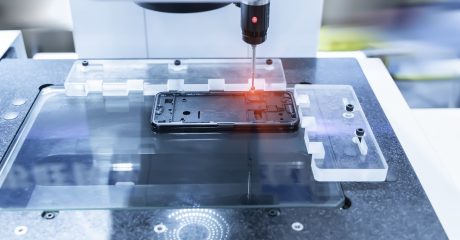We have many capabilities here at Custom Tool and Grinding. Many of you know about our services in general, but what about the specifics? We want to take some time this week to talk about the multi-axis machining process and some things we are capable of because of this advanced manufacturing process.
The Start of Multi-Axis Cutting
More is better. As the name implies, multi-axis machining is a process in manufacturing where tools move in at least four different directions. The process helps create parts with metal and other materials by using laser cutting and water jet cutting. With this process, we can create complicated 3D geometric tools, like turbine blades and detailed cutting tools. Options for interior cuts are no longer inaccessible and parts can become much more detailed.
This process used to be completed on complicated machines operating with 4-12 axes, operated individually with levers on the cam plates. This enabled control of the tooling device, as well as the table in which the part was secured, and rotated the tooling or part inside of the machine.
Typical CNC tools utilize three axes. Multi-axis machines also support rotation around one or several of the axes. Workpieces translated linearly along x, y, and z axes usually use 5-axis machines. Here, the tooling spindle has additional capabilities of two axes rotation.
Multi-axis machines have three main components:
- The physical capabilities of the machine, such as spindle speed, axis orientation, operation and torque.
- The CNC drive system, or components that make the machine move. This includes servo-motors, ball screws, rapid traverse systems and position monitoring.
- The CNC controller, which controls how data is stored and transferred within the machine and how input data is processed and executed.
CAM Improvements
Older machines were powerful tools, but their size and complexity made them impractical for many shops. Another problem? They took a lot of time to set up and be ready for production. The advancements of computer numerical controlled (CNC) machining brought a more efficient and faster process for machining complex parts.
Computer aided manufacturing (CAM) systems have given us more options for multi-axis machining. There’s now software which can convert three-axis toolpaths into five-axis toolpaths automatically. Prior to these advancements, the work of transferring information from a design to production was intense manual labor—often resulting in errors, lost time and wasted material. The process has come a long way.
Benefits from Multi-Axis Machines
There are numerous improvements with these machines, but they do come with costs. They’re more reasonable for smaller shops from a cost perspective than previous equipment, but it usually makes even more sense to turn to businesses like Custom Tool to have your complex parts made. Still, these machines are invaluable, for so many reasons.
- Human labor is reduced with multi-axis machines, as pieces no longer need to be turned manually.
- They provide the ability to create complex parts, with curved holes and other unique traits.
- You can obtain a better surface finish with tangential movement.
- Parts are higher in quality, as reduced steps and set up scenarios decrease the chance for error.
- The machine allows for optimal angles, contributing to increased tool life.
Get Detailed Tools from Custom Tool & Grinding
We have all the tools and capabilities to machine complex geometries quickly and accurately. Our CNC multi-axis operations can make a world of difference in getting you the tools you need. Check out what we have to offer today, or request a quote for your specific needs.
